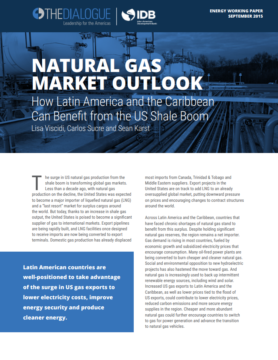
Natural Gas Market Outlook
Given their close proximity to the United States, LAC countries are well-positioned to capitalize on the surplus of US gas exports and current buyer’s market.
In November, 2023, the Inter-American Dialogue released the report "An Unprecedented Migration Crisis: Characterizing and Analyzing its Depth." In the report, Manuel Orozco, director of the Migration, Remittances, and Development program, and Patrick Springer, program assistant, detail the most recent increase in regional migration.
The recent migration wave to the US border has been referred to as a crisis. Media references point to the drama of people arriving and passing through the Darien, Central America, and Mexico to characterize the problem. Others have pointed out the increasing arrivals into US cities in numbers that are hard to manage by local communities. After analyzing several data points in comparison with historical trends, the authors conclude that the current wave does, indeed, constitute a crisis.
Some indicators to offer a dimension of this as a crisis are as follows:
The common denominator is political stability, which manifests differently in every country but mostly on the economic downturn of a non-democratic regime (like Venezuela or Haiti) or the massive expulsion of people as a matter of state policy, as is in Cuba and Nicaragua.
Pull factors may have played a role too – particularly the rapid drop in unemployment during the pandemic which coincided with the dramatic increase.
Given their close proximity to the United States, LAC countries are well-positioned to capitalize on the surplus of US gas exports and current buyer’s market.
Migrant transnationalism, in addition to being an expression of culture, identity and love, is an important economic phenomenon.
Central American migration is linked to poverty, inequality, and violence in the region.
 Cover image: Government of Panama
Cover image: Government of Panama

